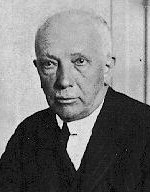

His father, a professional horn player, gave him a musical grounding exclusively in the classics, and he composed copiously from the age of six. He went briefly to university, but had no formal tuition in composition. He had several works given in Munich, including a symphony, when he was 17, and the next year a wind serenade in Dresden and a violin concerto in Vienna. At 20, a second symphony was given in New York and he conducted the Meiningen Orchestra in a suite for wind. In 1885 he became conductor of that orchestra, but soon left and visited Italy. He had been influenced by Lisztian and Wagnerian thinking; one result was Aus ltalien, which caused controversy on its premiere in 1887. By then Strauss was a junior conductor at the Munich Opera.
Other tone poems followed: Macbeth, Don Juan and Tod und Verklärung come from the late 1880s. It is Don Juan that, with its orchestral brilliance, its formal command and its vivid evocation of passionate ardour (he was in love with the singer Pauline von Ahna, his future wife), shows his maturity and indeed virtuosity as a composer. With its premiere, at Weimar (he had moved to a post at the opera house there), he was recognized as the leading progressive composer in Germany. He was ill during 1891-3 but wrote his first opera, Guntram, which was a modest success but a failure later in Munich. His conducting career developed; he directed many major operas, including Wagner at Bayreuth, and returned to Munich in 1896 as chief conductor at the opera. To the late 1890s belong the witty and colourful Till Eulenspiegel, a portrait of a disrespectful rogue with whom Strauss clearly had a good deal of sympathy, the graphic yet also poetic and psychologically subtle Don Quixote (cast respectively in rondo and variation forms) and Ein Heldenleben, 'a hero's life', where Strauss himself is the hero and his adversaries the music critics. There is more autobiography in the Symphonia domestica of 1903; he conducted its premiere during his first visit to the USA, in 1904.
Strauss was now moving towards opera. His Feuersnot was given in 1901; in 1904 Salome was begun, after Wilde's play. It was given at Dresden the next year. Regarded as blasphemous and salacious, it ran into censorship trouble but was given at 50 opera houses in the next two years. This and Elektra (given in 1909) follow up the tone poems in their evocation of atmosphere and their thematic structure; both deal with female obsessions of a disordered, macabre kind, with violent climaxes involving gruesome deaths and impassioned dancing, with elements of abnormal sexuality and corruption, exploiting the female voice pressed to dramatic extremes.
Strauss did not pursue that path. After the violence and dissonance of the previous operas, and their harsh psychological realism, Strauss and his librettist Hofmannsthal turned to period comedy, set in the Vienna of Maria Theresa, for Der Rosenkavalier; the score is no less rich in inner detail, but it is applied to the evocation of tenderness, nostalgia and humour, helped by sentimental Viennese waltzes. Again the female voice - but this time its radiance and warmth is exploited, in the three great roles of the Marschallin, Octavian and Sophie. It was given at Dresden in 1911 with huge success and was soon produced in numerous other opera houses. Strauss followed it with Ariadne auf Naxos, at first linked with a Moliere play, later revised as prologue (behind the scenes at a private theatre) and opera, mixing commedia dell'arte and classical tragedy to a delicate, chamber orchestral accompaniment. The two versions were given in 1912 and (in Vienna) 1916.
Strauss had been conducting in Berlin, the court and opera orchestras, since 1908; in 1919 he took up a post as joint director of the Vienna Staatsoper, where his latest collaboration with Hofmannsthal, Die Frau ohne Schatten, was given that year: a work embodying much symbolism and psychology, opulently but finely scored, and regarded by some as one of Strauss's noblest achievements. His busy, international conducting career continued in the inter-war years; there were visits to North and South America as well as to most parts of Europe in the 1920s, which also saw the premieres of two more operas, both at Dresden, the autobiographical, domestic comedy Intermezzo and Die ägyptische Helena. His last Hofmannsthal opera, Arabella, an appealing re-creation of some of the atmosphere of Rosenkavalier, followed in 1933. Of his remaining operas, Capriccio (1942), a 'conversation-piece' in a single act set in the 18th century and dealing with the amorous and artistic rivalries of a poet and a musician, is the most successful, with its witty, graceful, serene score.
During the 1930s Strauss, seeking a smooth and quiet Iife, had allowed himself to accept - without facing up to their full import - the circumstances created in Germany by the Nazis. For a time he was head of the State Music Bureau and he once obligingly conducted at Bayreuth when Toscanini had withdrawn. But he was frustrated at being unable to work with his Jewish librettist, Stefan Zweig (Hofmannsthal had been part-Jewish), and he protected his Jewish daughter-in-law; during the war years, when he mainly lived in Vienna, he and the Nazi authorities lived in no more than mutual toleration. When Germany was defeated, and her opera houses destroyed, Strauss wrote an intense lament, Metamorphosen, for 23 solo strings; this is one of several products of a golden 'Indian summer', which include an oboe concerto and the Four Last Songs, works in a ripe, mellow idiom, executed with a grace worthy of his beloved Mozart. He died in his Garmisch home in 1949.